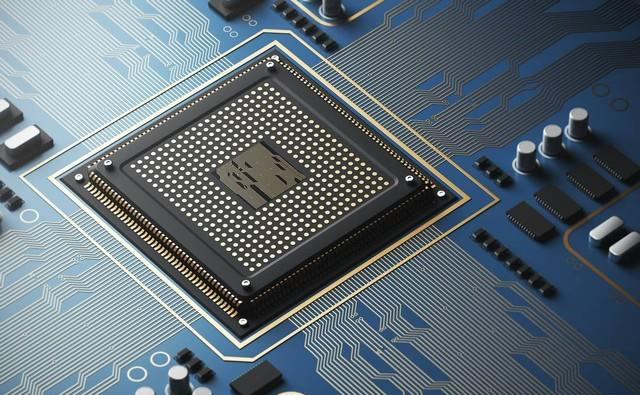Welcome Here Shenzhen Mingjiada Electronics Co., Ltd.

sales@hkmjd.com

sales@hkmjd.com

Service Telephone:86-755-83294757
 Latest Information
Latest Information Home
/Industry Information
/
Home
/Industry Information
/
On Semiconductor Sky Eye: Empowering the AI Vision System of Next-Generation Drones
Drones have been widely adopted in the entertainment industry (such as television programmes and film production), amateur photography, and even as trendy toys. Leveraging their ability to access complex areas, drones are increasingly being applied in…
Drones have been widely adopted in the entertainment industry (such as television programmes and film production), amateur photography, and even as trendy toys. Leveraging their ability to access complex areas, drones are increasingly being applied in professional scenarios such as industrial inspection, logistics delivery, and security surveillance. But did you know that the core component supporting drone operations is the visual system? Before delving into this topic, we will first clarify the definition of drones, outline their diverse application scenarios, and analyse the underlying logic behind their rapid proliferation. Finally, we will explore how Onsemi is driving the evolution of drone visual systems through technological innovation.
Types and Applications
Drones are unmanned aerial vehicles (UAVs), also known as unmanned aerial systems (UASs), and in some cases referred to as remotely piloted aircraft (RPAs). They do not require human pilots and can operate autonomously through various systems.
Drones are categorised into three types: fixed-wing drones, single-rotor/multi-rotor drones, and hybrid-rotor drones. Each type has distinct applications that align closely with their intended use cases.
Fixed-wing drones are typically used for heavy-load transportation and long-endurance flight missions, deployed in scenarios such as intelligence, surveillance, and reconnaissance (ISR) missions, combat operations, loitering munition deployment, mapping, and research activities.
Single-rotor/multi-rotor drones have the widest range of applications, spanning industrial scenarios such as conventional warehousing, equipment inspections, and logistics delivery. Due to the diverse range of scenarios these models can address, highly optimised mechatronic solutions are required to meet varying demands.
Hybrid rotor drones combine the advantages of both types, featuring vertical takeoff and landing (VTOL) capabilities, making them more versatile and particularly suitable for space-constrained areas. It is therefore no surprise that most logistics delivery drones opt for this type.
Drone motion and navigation systems
Drones are equipped with various sensors for motion and navigation, including accelerometers, gyroscopes, and magnetometers (collectively known as inertial measurement units, or IMUs), as well as barometers. These sensors utilise various algorithms and technologies, such as optical flow (using depth sensors), simultaneous localisation and mapping (SLAM), and visual odometry. While these sensors perform well, they often struggle to achieve the required precision and accuracy within reasonable cost and size constraints. This issue is exacerbated during long-duration flights, leading to the need for expensive batteries or reduced flight times due to battery charge/discharge cycle limitations.
UAV Visual Systems
Image sensors complement the aforementioned sensors, significantly enhancing performance and enabling UAVs to achieve high accuracy and precision. Visual systems primarily consist of two components: gimbals (often referred to as payloads) and visual navigation systems (VNS).
Gimbals* – Provide first-person view (FPV); Typically integrates multiple image sensors covering a wide electromagnetic spectrum range (special cases may include ultraviolet sensors; conventional CMOS image sensors cover the 300nm–1000nm wavelength band, short-wave infrared (SWIR) sensors extend to 2000nm, while mid-wave infrared (MWIR) and long-wave infrared (LWIR) sensors cover wavelengths above 2000nm).
Visual Navigation System (VNS) – used to provide navigation guidance, target recognition, and obstacle avoidance functions; Typically composed of low-cost, low-resolution image sensors, combined with IMU and other sensor data, and utilising computer vision technology to build a complete autonomous navigation solution.
The Importance of Visual Systems
As described in the previous section on applications and uses, drones can operate in both indoor and outdoor environments. These scenarios often present significant challenges, including wide variations in lighting conditions and visibility constraints in dusty, foggy, smoky, or pitch-black environments. UAV systems rely on a variety of artificial intelligence (AI) and machine learning (ML) algorithms to process image data, while also utilising data from the technologies described earlier. All of this must be achieved while ensuring that the highly optimised equipment operates at low power consumption and achieves long-range or long-endurance operational goals.
The data input into these algorithms must be highly accurate and rich in detail, but in some use cases, only necessary information is required to enable efficient processing. AI/ML training time must be reduced, and inference processes must be fast while maintaining high accuracy and precision. Regardless of the environment in which the drone operates, image quality must be maintained to meet these requirements.
Sensors that can only capture scenes and submit information for processing are far from sufficient to support the high-quality operation of these devices, and in most cases, they may even fail to achieve the intended deployment objectives. An ideal sensor should have the following capabilities: achieve miniaturisation while retaining complete details of the area of interest; have a wide dynamic range to handle bright and dark light in the same frame; minimise or eliminate parasitic effects in images; address visibility issues caused by dust, fog, or smoke; and utilise high depth resolution to assist image processing. Such sensors will significantly enhance the performance of drones as highly optimised devices.
These capabilities can significantly reduce the resource requirements for image reconstruction, analysis, and decision-making acceleration, including processing cores, graphics processing units (GPUs), on-chip or off-chip memory, bus architecture, and power management. This also reduces the bill of materials (BOM) cost for the entire system, especially considering that today's drones can easily carry more than 10 image sensors. Additionally, with the same resource configuration, more in-depth analysis and more complex decision-making assistance algorithms can be achieved, enabling drones to gain a competitive edge in highly competitive fields.
ON Semiconductor is a technology leader in the perception field, delivering significant innovations for visual system solutions and offering a comprehensive range of image sensors to meet the needs of gimbals and VNS. Product series such as Hyperlux LP, Hyperlux LH, Hyperlux SG, Hyperlux ID, and SWIR integrate advanced technologies and features to fully address the requirements of drone visual systems. Today, drone manufacturers can obtain all the necessary visual sensors from ON Semiconductor in a one-stop solution, compliant with NDAA requirements.

Time:2025-08-26
![[TI] INA193AIDBVR 500kHz Current Sense Amplifiers——Current Shunt Monitor](/upload/202508/25/202508251455390711.jpg)
Time:2025-08-25
![[Genuine Original Product] Infineon IGBT Module_FZ900R12KE4_1200V/900A Industrial Grade](/upload/202508/25/202508251435528213.jpg)
Time:2025-08-25

Time:2025-08-25
Contact Number:86-755-83294757
Enterprise QQ:1668527835/ 2850151598/ 2850151584/ 2850151585
Business Hours:9:00-18:00
E-mail:sales@hkmjd.com
Company Address:Room1239, Guoli building, Zhenzhong Road, Futian District, Shenzhen, Guangdong
CopyRight ©2022 Copyright belongs to Mingjiada Yue ICP Bei No. 05062024-12

Official QR Code
Links: